The Haganah
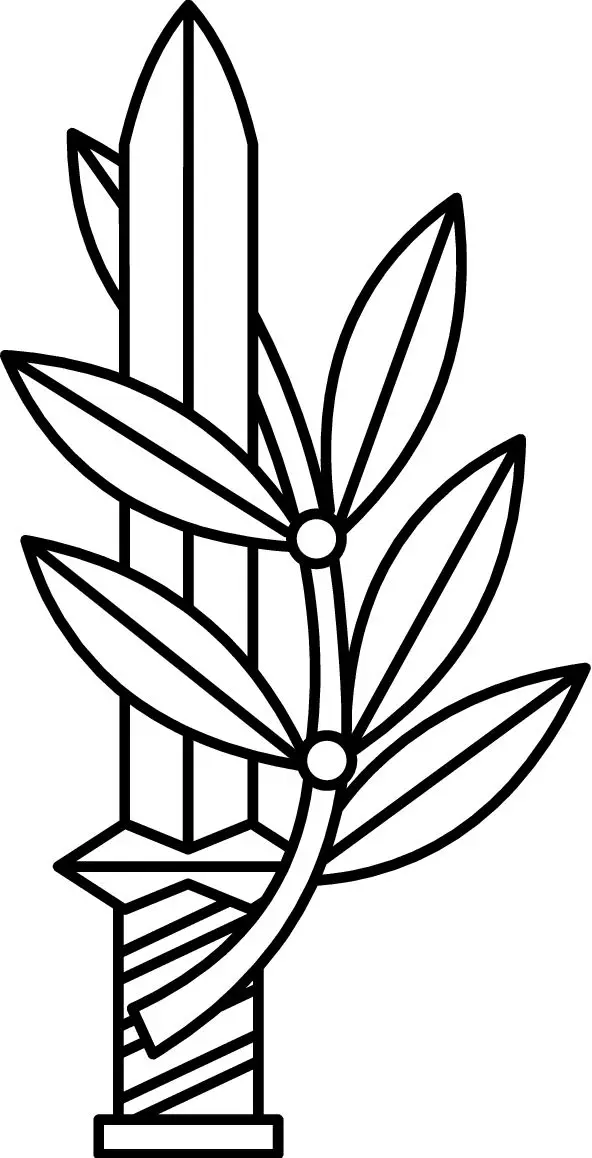
The Haganah was the underground military organization of the yishuv in Eretz Yisrael from 1920 to 1948. The Arab riots in 1920 and 1921 strengthened the view that it was impossible to depend upon the British authorities and that the yishuv needed to create an independent defense force completely free of foreign authority. In June 1920, the Haganah was founded.
During the first nine years of its existence, the Haganah was a loose organization of local defense groups in the large towns and in several of the settlements. The Arab riots in 1929 brought about a complete change in the Haganah’s status.
- It became a large organization encompassing nearly all the youth and adults in the settlements, as well as several thousand members from each of the cities.
- It initiated a comprehensive training program for its members, ran officers’ training courses;
- Established central arms depots into which a continuous stream of light arms flowed from Europe.
- Simultaneously, the basis was laid for the underground production of arms.
During 1936-1939, the years of the Arab Revolt were the years in which the Haganah matured and developed from a militia into a military body. Although the British administration did not officially recognize the organization, the British Security Forces cooperated with it by establishing a civilian militia. In the summer of 1938, Special Night Squads — S.N.S. were established under the command of Captain Orde Wingate.
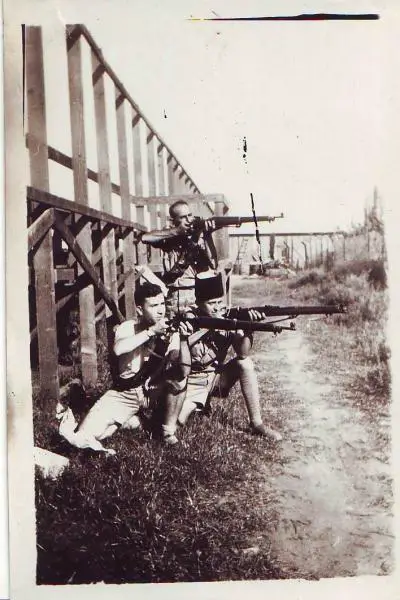
Haganah guarding a position near Migdal Tzedek (1936)
During the years of the riots, the Haganah protected the establishment of more than 50 new settlements in new areas of the country (see Homa Umigdal — Stockade and Watchtower Settlements). As a result of the British government’s anti-Zionist policy, expressed in the White Paper of 1939, the Haganah supported illegal immigration and organized demonstrations against the British anti-Zionist policy.
With the outbreak of World War II, the Haganah was faced with new problems. It headed a movement of volunteers, from which Jewish units were formed for service in the British army (see Jewish Brigade Group). It also cooperated with British intelligence units and sent its personnel out on various commando missions in the Middle East. Another example of this cooperation was the dropping of 32 Jewish parachutists in 1943-44 behind enemy lines in the Balkans, Hungary, and Slovakia (see also Hannah Szenesh, Enzo Sereni, Havivah Reik).
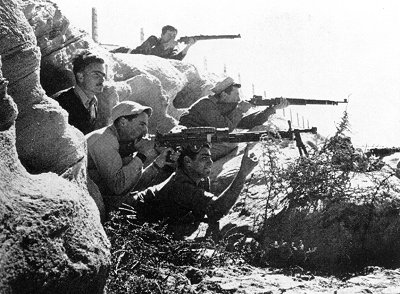
Haganah fighters (1947)
At the same time, the Haganah further strengthened its independence during the war. A systematic program of training was instituted for the youth of the country. In 1941, the Haganah’s first mobilized regiment, the Palmach, came into being. At the end of the war, when it became clear that the British government had no intention of altering its anti-Zionist policy, the Haganah began an open, organized struggle against British Mandatory rule in the framework of a unified Jewish Resistance Movement, consisting of the Haganah, Irgun Zevai Le’umi - Etzel, and Lohamei Herut Yisrael — Lehi. In its most spectacular operation, the combined forces sabotaged British railways throughout Palestine on the “Night Of The Railways.”
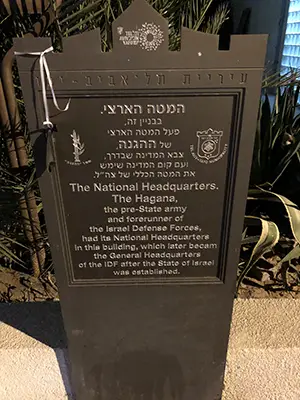 |
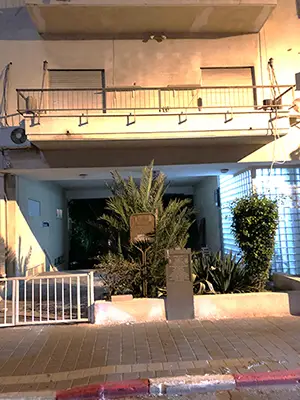 |
The Haganah did not function only in Palestine. It had branches in other parts of the world, including the United States, Poland, Germany, Italy, France, and Morocco. The activities of the Haganah in the United States attracted the attention of the FBI, which was concerned with its possible violation of U.S. laws.
Officers trained tens of thousands of new immigrant recruits in training camps in Europe and North Africa, even before they immigrated to Israel, including many Holocaust survivors. Haganah branches were also established at Jewish D.P. [displaced person] camps in Europe. Officers also recruited thousands of volunteers from Western Europe, North America, and South Africa.
“Illegal” immigration was organized by the Mossad L’aliyah Bet, a branch of the Haganah. The Palyam, a marine branch of the Palmach, was given responsibility for commanding and sailing the ships. Between 1945 and 1948, 66 clandestine immigrant ships carrying 70,000 immigrants sailed to Eretz Yisrael.
Haganah operatives purchased large quantities of arms from the United States, Western Europe, and Czechoslovakia, and sent them to Palestine. The group also founded a weapons industry, TAAS. On the eve of independence, TAAS owned 46 factories manufacturing submachine guns, mortars, grenades, bullets, and explosives.
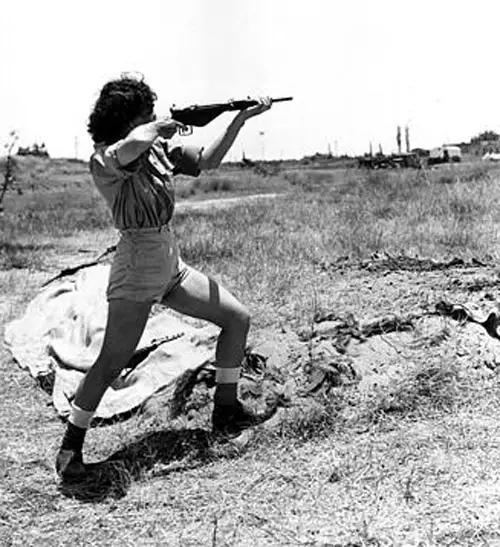
Female officer (1948)
In the spring of 1947, David Ben-Gurion took it upon himself to direct the general policy of the Haganah, especially in preparation for the impending Arab attack. On May 26, 1948, the Provisional Government of Israel decided to transform the Haganah into the regular army of the State, to be called “Zeva Haganah Le-Yisrael” — the Israel Defense Forces (IDF).
Between 1920 and April 1949, 5,151 members of the Haganah were killed, 3,952 of whom died fighting in the 1948 War.
On May 31, 1948, as part of the order of the day establishing the IDF, David Ben-Gurion said:
Today, it is possible to learn more at the Haganah Museum in Tel Aviv.
Sources: The Pedagogic Center, The Department for Jewish Zionist Education, The Jewish Agency for Israel, (c) 1997, 1998, 1999, 2000, Director: Dr. Motti Friedman, Webmaster: Esther Carciente;
Haganah Museum.
Photos: Symbol -Meronim, CC BY-SA 3.0 via Wikimedia Commons/
Haganah 1936 - Yossef Tamir’s image collection, CC BY 2.5 via Wikimedia Commons.
Fighters - Public domain via Wikimedia Commons.
Woman - Public domain via Wikimedia Commons.


